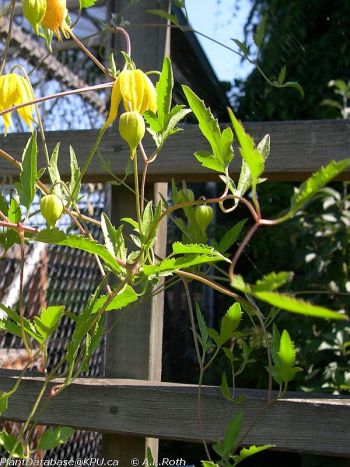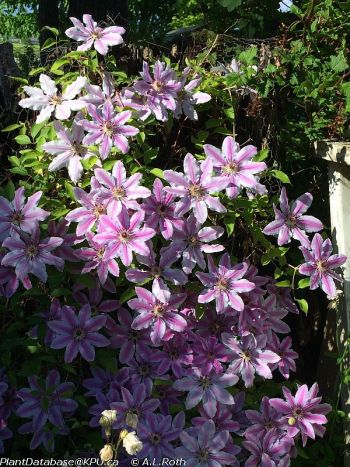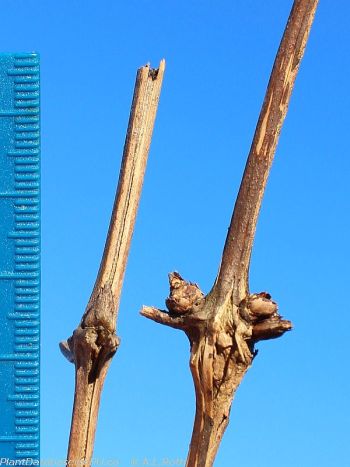Scientific Name:
Clematis
spp.
Pronunciation:
KLEM-uh-tiss
Common Name:
clematis
Family Name:
Ranunculaceae
Plant Type:
Vine - deciduous, Vine or climber
Key ID Features:
Leaves mostly 3-lobed or compound and often with irregularly serrate margins, petiole tendrils; fruit is a ball of achenes with long hairs. Winter ID: part of petiole often stays attached, buds opposite, ovoid, 1-3mm long on horizontally ridged nodes.
Habit:
Pendulous, Spreading, Twiggy
Form:
Climbing, Irregular
Texture:
Medium
Mature Height:
2 - 3m
Mature Spread:
2 - 3m
Growth Rate:
Fast
Origin:
(See separate entries for each species)
Hardiness Rating:
Zone 5: (-29 to -23 °C)
Exposure:
Full sun, Part sun/part shade
Soil/Growing Medium:
Humus rich, Well-drained
Water Use:
Low
Landscape Uses:
Arbors or trellis, Dried flower or fruit, Fall interest, Ground cover, Perennial border, Screening, Small garden/space, Summer interest
Additional Info:
Google. Species shown may include
C. armandii (evergreen),
C. montana,
C. recta,
C. tangutica (yellow flowers), and
C. vitalba.
Leaf Morphology:
Form:
Compound
Arrangement:
Opposite
Texture/Venation:
Surfaces:
Compound Leaf:
Odd-pinnate, Bipinnate
Colour in Fall:
Yellow
Shapes:
Lanceolate, Oblong
Apices:
Acute
Margins:
Dentate
Bark Morphology:
Exfoliating, Smooth, Stringy
Bark or Stem Colour:
Brown
Leaf Bud Type:
Ovoid
Leaf Scar Shape:
Other
Organ Modifications:
Tendrils
Propagation:
Seed, Softwood cuttings, Layering, Division - below ground parts, Grafting, Stem/cane cuttings
Maintenance:
Medium
Pest Susceptibility:
Aphids, Canker or sap rot, Earwigs, Fungal leaf spot, Mildew, Mold, Nematodes, Rodents, Rust, Scale insects, Stem borer insects
Course(s):
- Level 3 Apprenticeship
Location(s):
- (BCW) Boulevard (Circular) Westend : C. tangutica
- (CGW) Community Garden West : C. tangutica





